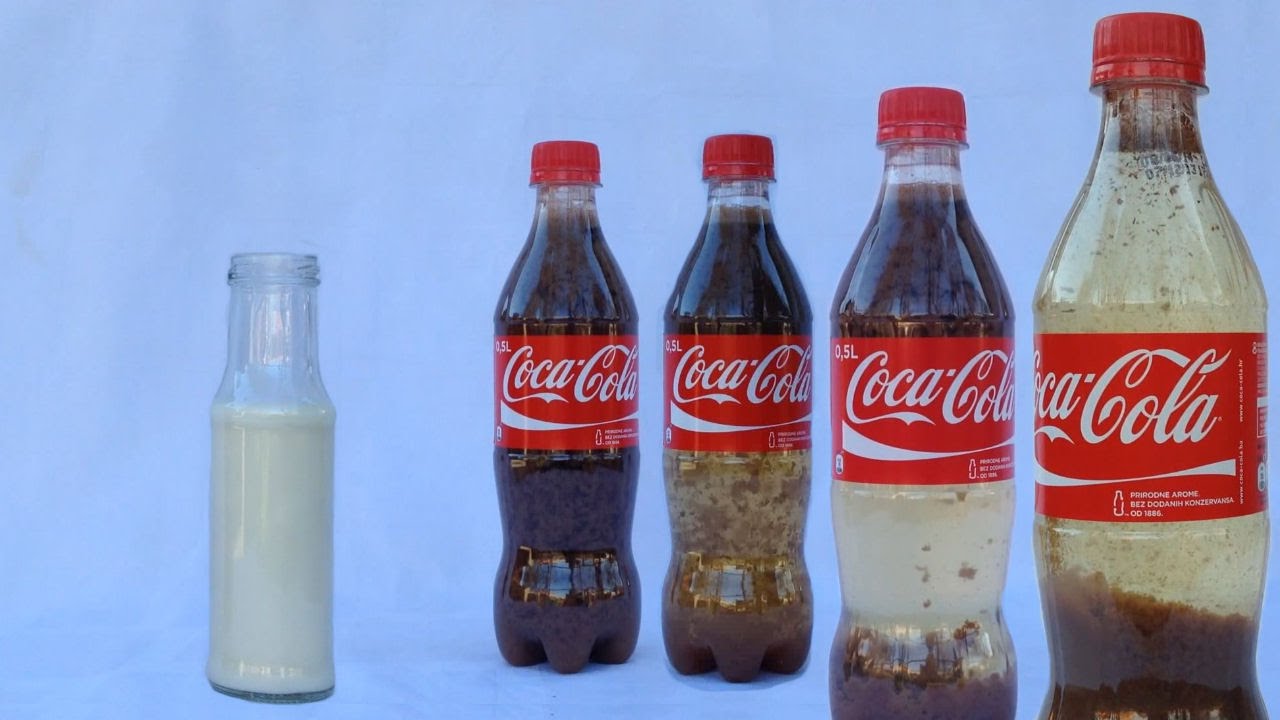Ah the mysterious and debated chemical compound we call Coca Cola. Some people love it, a few people hate it and many science experiments have studied the properties of the drink as well as its various containers. Possibly the most infamous viral science video in regards to soft drinks are the dudes with lab coats who put Mentos into the containers. Another experiment involves the electrical properties of the aluminum cans that often holds this popular beverage.
This experiment might surprise you and only involves milk, coca cola and time.
Check it out…
“The reaction of phosphoric acid (V) to proteins in the milk – they are cut and causes a precipitate
The reaction of phosphoric acid with calcium contained in milk gives rise to a precipitate
3Ca + 2H3PO4 ///\\\ Ca3(PO4)2 + 3H2It is a reaction of the Phosphoric Acid contained in the coca cola to the milk. Phosphoric Acid molecules attach to the milk giving them more density and separate out while the remaining liquid that makes up the milk and cocoa cola now being lighter floats on top. The solid matter is basically milk that has been curdled by the addition of the more acidic soda.
Both items are acidic but coca-cola more so. In general, coca-cola has a pH of anywhere from 2.5-4.5 because of the Phosphoric Acid content where milk has a normal pH around 6.7 (almost neutral, milk that is in the base range is usually mastitic).”
Some say this proves drinking Soda will result in osteoporosis at an earlier age.
